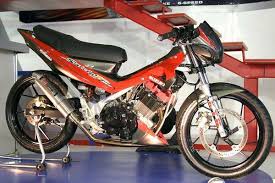|
|
|---|
|
|
|---|
Modification of low rider style is no longer something special. But, there are interesting from the work of Bambang Winarto, master Herry Matic Modification (HMM), while establishing his Yamaha Mio Sporty 2007. Experience as a craftsman and player of Jepara furniture almost 30 years he practiced at skutik “tuning fork” is..........









0 komentar:
Post a Comment